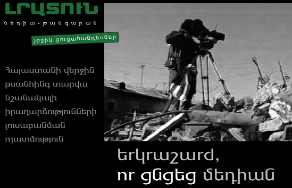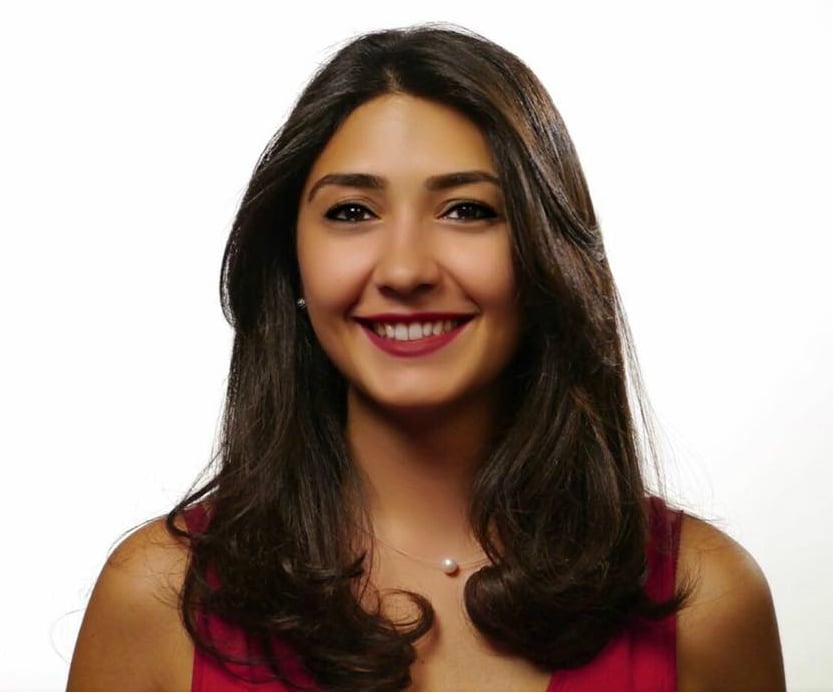
Lratun media museum’s first multimedia exhibit — “An Earthquake that Shook the Media” — will depict how the press, television, and documentarians of the time covered the 1988 Spitak earthquake.
“The media museum is the story of the coverage of significant events in Armenia over the last 25 years. We’ve chosen the Spitak earthquake as the first event for two reasons: first, because the earthquake opened up the Soviet Union to the world and changed the media sector and the approach to news outlets and to journalism, and second, because this year is the 25th anniversary of the earthquake,” said Lratun project coordinator Vahram Martirosyan.
Touch screens in the media museum showcase interviews with photographers, journalists, and filmmakers; excerpts from the Armenian press; television reports and interviews with authors; documentaries; unpublished archival works; and a selection of the best photographs of 10 photographers (Avetik Ohanyan, Armen Muradkhanyan, Hakber, Ruben Mangasaryan, Martin Shahbazyan, Poghos Poghosyan, Mkhitar Khachatryan, Mikayel Kalantar, Vahan Kochar, and Vram Hakobyan), Photolur agency, and witnesses.
“Visitors can familiarize themselves with the front pages of the papers published the day after the earthquake. If this might seem uninteresting, let it be known that, say, the main Soviet newspaper, Pravda, didn’t report the news of the earthquake because… it was ignoring a country that was rushing toward independence from the Soviet Union. You can read around ten articles where journalists write how difficult it is to perform their professional duties; around 70 articles that describe witnesses, those miraculously rescued, and heroes,” he says.
Lratun is a project of the Media Initiatives Center (formerly, Internews Media Support NGO, the organization also responsible for this site), developed within the framework of the Alternative Resources in Media program and with the support of the United States Agency for International Development (USAID).
[[wysiwyg_imageupload:499:]]
The idea to establish a media museum came from Newseum, an interactive museum of news and journalism in Washington, D.C., which displays how the media describes events that have an enormous impact on the public.
“This idea really appealed to me, first, because this is an opportunity to gather in one place the different types of media connected to important events and second, because this is a form of media literacy: visitors will be able to understand what [topics] the media chooses, why it chooses it, how it depicts it, what characters it can create, and what it leaves to history,” says Media Initiatives Center Executive Director Nouneh Sargsyan. “We don’t want to stop with one topic; we want to present how, in the past 25 years, the media — including social media — described important events: the Karabakh movement, elections, and so on. And after these travelling exhibits, we want to find a place in Yerevan where the museum can operate permanently.”
Media museum visitors will also be able to play the media literacy game Mediamart (“Media Battle”), with which they’ll be able to check and supplement their knowledge about the media, as well as report from anywhere in the world with the assistance of simulated tools.
The Lratun media museum exhibit will launch in Gyumri’s Still Museum of Fine Arts on Sept. 26 at 2 pm and will be on display till Oct. 2.
The travelling exhibit will be in Vanadzor, from Oct. 5–15; Martuni, Oct. 15–19; and Kapan, Oct. 22–27.
Anna Barseghyan


Add new comment
Comments by Media.am readers become public after moderation. We urge our readers not to leave anonymous comments. It’s always nice to know with whom one is speaking.
We do not publish comments that contain profanities, non-normative lexicon, personal attacks or threats. We do not publish comments that spread hate.